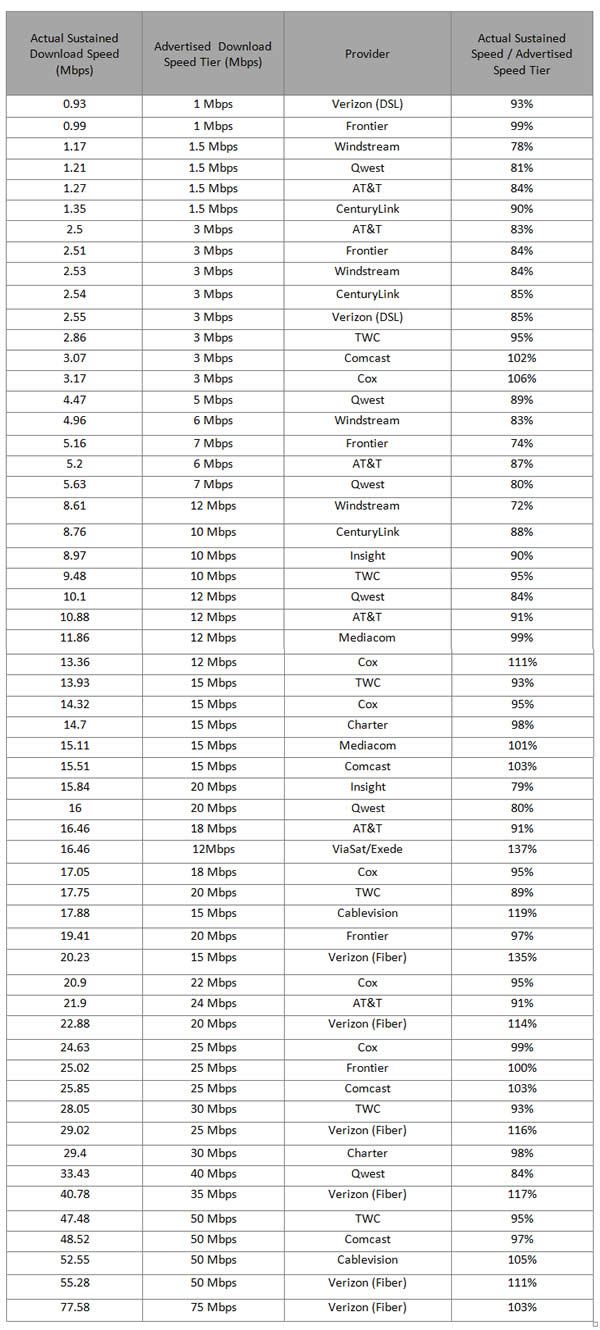Which ISPs Are Providing The Speeds They Advertise?
The above chart doesn’t indicate which of the ISPs was fastest or slowest, merely how each ISP fared in delivering the speeds promised in its advertising to consumers. So while you can’t look at it and say that Cablevision provides a faster service than AT&T, you can use this info to decide how willing you are to accept a company’s advertising claims.
The chart at the bottom of this post shows in greater detail the actual sustained download speeds per tier per provider.
This is the first time that the FCC has included a satellite broadband provider in its Measuring Broadband report, and ViaSat, which we told you about when we got a hands-on demo at the 2012 Consumer Electronics Show, made a pretty good rookie showing. Not only did it deliver speeds faster than the advertised 12 mbps downstream that ViaSat advertises, it had the highest actual/advertised ratio of all the ISPs in the study.
“While latency for satellites necessarily remains much higher than for terrestrial services,” writes the FCC, “with the improvements afforded by the new technology we find that it will support many types of popular broadband services and applications.”
Here is the per-provider, per-tier breakdown of actual sustained download speeds:

You can check out the full test results and report HERE.
Want more consumer news? Visit our parent organization, Consumer Reports, for the latest on scams, recalls, and other consumer issues.


